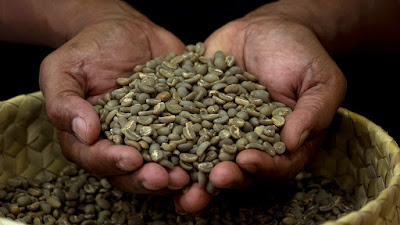Timor-Leste GDP and its components Time Series
Economic development is an important thing for a country like Timor-Leste, independent since only 2002. Economic development is vital to seeing improved livelihoods, more food for our children, better schools, increased employment opportunities, better health services, and much more.
So how to we measure progress in economic development? The most common measure of economic activity is Gross Domestic Product (GDP). GDP measures a country's wealth and the economy's performance. In simple terms, GDP is the $ value of all goods and services produced within a country. Using the most common measurement method, the components of GDP are given by the following equation:
Y = C + I + G + NX
Y is GDP, C stands for consumption, I stand for investment,
G stands for Government spending and NX stands for net exports
which is calculated as exports minus imports.
I recently obtained data on these components of GDP for the whole 20 years of Timor-Leste’s history, and estimated some econometric models to measure the impact of changes in each of these components on the overall level of GDP. Here are some highlights of the modeling:
- We would
expect that an increase in each component of GDP would increase the GDP. This
turned out to be the case. For example,
the model found that a $100 increase in household consumption expenditures produces
a $98.40 improvement in GDP, provided Exports - Imports remain constant. In other words, when people spend more, the
overall GDP increases at about the same rate.
Similar results were found for each of the components.
- Investment
spending is worthy of comment: the impact on GDP of an extra $100 spent on
investment was still only around $100.
This is disappointing, because we hope for a multiplier effect of
investment: when a business invests, ideally jobs are created, people earn
money, they buy things, and other businesses also grow. So $1 spent on investment should flow into
much higher GDP - perhaps $2 or even $3 extra for every $1 invested. Why don’t
we see the benefits of investment in Timor-Leste yet? It seems most likely this is because much of
the money on investment the government or private investors uses is spent on
imported supplies or machinery, so it doesn’t contribute much to ongoing
economic activity in the country.
- The same logic applies to Government spending. We would hope that government spending would stimulate ongoing economic growth, so $100 of government spending would lead to a much bigger increase in GDP. In reality, the increase is small: the model estimates it produces $107 worth of growth in GDP. The likely reason behind this result is similar to that for investment: when the government spends money much of the spending is on goods and services imported from another country. There will be some modest increase to the GDP but not too much because the money that the government spends on imports goes to another country and doesn’t benefit the economy of Timor-Leste.
One message of this analysis is that the Government should consider spending more strategically instead of simply spending more. Even though 80% of the national state budget comes from petroleum funds, it is predicted that the petroleum fund will run dry by 2034 or even sooner. Proper spending from the government on what is important will make the petroleum fund last longer, giving more time to develop other sectors.
Now let’s look at how things have been changing over time. Here a graph of GDP and its components over the past 20 years. There are a few messages from this graph.
- Real GDP has been growing quite slowly over the 20 year.
- Household consumption doesn’t show a significant increase over the last twenty years. Timorese have not seen a significant increase in funds available to spend daily household needs like food, housing, healthcare, transport, education.
- Government spending fluctuates over time, but it has been fairly steady since 2013.
- Investment (technical language is Gross Fixed Capital formation) has tended to decline from 2012 until 2020.
- Net exports tend to be negative from 2001 to 2018, meaning imports far outweighed exports. A change in definition of Oil and Gas revenues meant that Exports increased in 2019, but this trend is not continuing since.
It is well known that the GDP of Timor-Leste still faces many problems caused by the country's dependence on the oil and gas sector. Improvements in other potential sectors like agriculture, tourism, and human capital would have made a huge improvement in GDP over time.
Therefore, we would like to come up with more practical recommendations as follows:
- Government should invest more in human capital and other potential sectors. This could generate more ideas as there is a focus on research and on development of new ideas that would give such a positive impact on the overall economic performance of Timor-Leste.
- Government should also invest in its health care system that provides immunization, periodic deworming, early diagnosis and proper treatment of common illnesses. This can go a long way in preventing malnutrition. If we can lessen the malnutrition problem, this will contribute to strengthening human capital.
- Government should maximize the usage of petroleum fund to boost other productive sectors (agriculture, tourism, infrastructure, health, and education) in such a way to produce a multiplier revenue, instead of using the funds on things that do not benefit all citizens, such as paying the costs of the Timorese representatives in international workshops and so on.
To get access in details about the research paper, please click this link:
https://drive.google.com/file/d/1uVl_vy00hI9Cm0i7CeA5OoWK80CcP5qI/view?usp=sharing
About the Author





Comments
Post a Comment